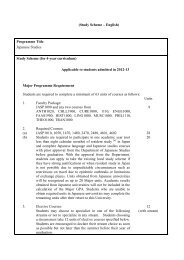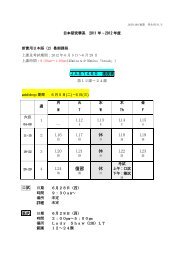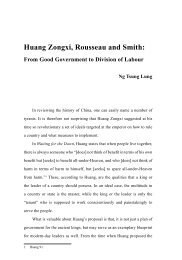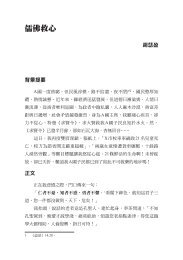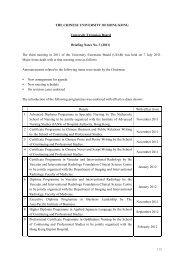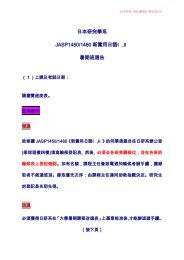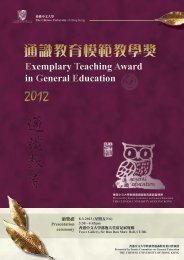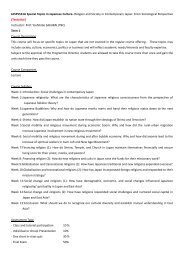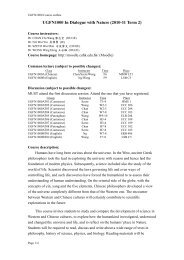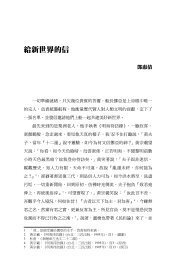ä¸è¼å ¨æ¸ - The Chinese University of Hong Kong
ä¸è¼å ¨æ¸ - The Chinese University of Hong Kong
ä¸è¼å ¨æ¸ - The Chinese University of Hong Kong
You also want an ePaper? Increase the reach of your titles
YUMPU automatically turns print PDFs into web optimized ePapers that Google loves.
16 Special Topic: Assessment in <strong>University</strong> General Education Program<br />
to be replaced by much more specific statements like “describe,” “analyze,”<br />
or “apply,” once faculty learn about Bloom’s cognitive taxonomy and how<br />
the subtle differences in language are related to the teaching and learning<br />
methods and assessment <strong>of</strong> learning outcomes. Second, although some<br />
learning outcomes can be stated in terms <strong>of</strong> overt or observable behaviors<br />
(e.g., asks clarifying questions, volunteers participation), others refer only<br />
to internal states (e.g., is motivated to learn more, “appreciates” diversity<br />
or the arts), which must be inferred. An internal state is a broad category<br />
that stands for all <strong>of</strong> the attitudes, thinking processes, and motivations that<br />
individuals have, which are not directly observable, but which are recognized<br />
to exist within the minds <strong>of</strong> individuals. In cases where an affective learning<br />
goal is really an internal state, the affective learning outcome needs to be<br />
written as an internal state, with the recognition that the internal state itself<br />
is not observable or directly assessable, but with an acknowledgment that the<br />
assessments and their interpretations can be altered to examine the types <strong>of</strong><br />
behaviors that provide the best evidence to support conclusions regarding the<br />
presence <strong>of</strong> that internal state.<br />
It is the instructor’s clarity <strong>of</strong> purpose and instructional goals, relative to<br />
affective learning, which are the essential starting point for writing affective<br />
learning outcomes. <strong>The</strong> faculty member’s instructional intent should<br />
determine whether and how to state affective learning outcomes separate<br />
from cognitive or psychomotor ones. Fortunately, Krathwohl’s taxonomy<br />
provides guidance regarding the specification <strong>of</strong> affective ILOs. Time spent<br />
in clarifying the affective ILOs will make it much easier to specify both the<br />
teaching and learning methods and the assessments necessary to determine<br />
the achievement <strong>of</strong> those outcomes.



